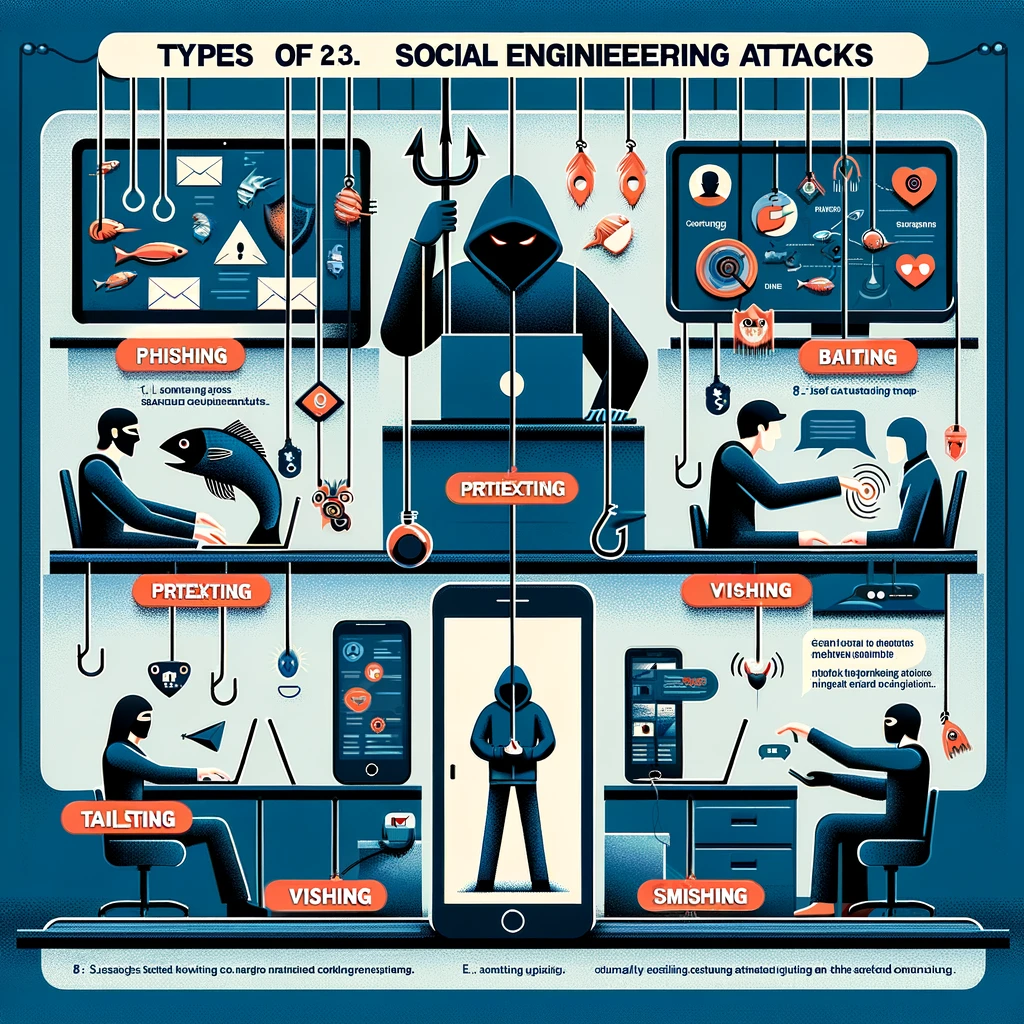Social Engineering Attacks And How To Avoid Them
In this article, we will guide you through the maze of social engineering attacks. We will show you the tactics of cyber tricksters, from phishing to pretexting, and arm you with the knowledge to recognize these digital threats. It’s more than awareness. We are offering you a shield of strategies: verification processes, technological safeguards. We want you to develop a culture of cybersecurity. Likewise, we are enhancing how you can protect yourself from social engineering.
What Is Social Engineering
Social engineering attacks manipulate human psychology to trick individuals and reveal confidential information. Granting unauthorized access is another issue. These cyber criminals are using trust and curiosity through various tactics. Among them are phishing, pretexting, baiting and more. They are targeting for unsuspecting users into making security mistakes, undergoing the defense. Let’s check types of these attacks closer to be ready to defend ourselves against social engineering.
Types Of Social Engineering Attacks
Phishing
A classic example is receiving an email that appears to be from your bank, urging you to click a link. It’s all about you to verify your account due to suspicious activity. The link leads to a fake website designed to steal your credentials.
Pretexting
An attacker calls. He is claiming to be from the IT department, needing your password to solve a supposed issue. They’ve gathered enough about you from social media to sound convincing.
Baiting
Imagine finding a USB drive labeled “Staff Salary Info” in your office parking lot. Curiosity leads you to plug it into your computer, installing malware.
Tailgating
Classic movie-like example. Someone dressed as a courier asks you to hold the door to your office building. This way, you are allowing them unauthorized entry without security checks.
Quid Pro Quo
You receive a call offering free IT support. In exchange, you need to give access to the login credentials. They will be claiming system performance improvement and other pros, yet, it’s a trick.
Vishing (Voice Phishing)
Attackers use phone calls to trick victims into providing personal information. It can be financial details as well. Criminals are pretending to be a legitimate entity, like a bank or tax authority.
Smishing (SMS Phishing)
Like phishing, but conducted through SMS text messages. Attackers send messages that lure recipients to click malicious links.
Impersonation
Attackers assume the identity of a trusted or authoritative figure via email. Or it even can be done over the phone to gain access to restricted areas or information.
Watering Hole Attacks
Targeting specific groups by infecting websites. These websites are with preinstalled malware. And this way they are going through security holes.

Ways to Recognize Social Engineering
Recognizing social engineering is crucial for your digital safety. These attacks often come cloaked in legitimacy, making them hard to spot. Yet, there are telltale signs:
Urgency and Fear. Attackers use pressing language to create a sense of urgency. This way, prompting quick action without thorough verification.
Request for Confidential Information. Be careful with unexpected requests. These are for private details like passwords, money information, or personal data.
Mismatched Email Addresses and URLs. Examine sender email addresses and URLs closely. A slight deviation from the official address or a misspelled domain name is a red flag.
Unexpected Attachments or Links. Beware of emails or messages that include unexpected attachments or links. Especially if they are from an unknown address.
Too Good to Be True Offers. Offers that seem overly beneficial – you should treat them with skepticism.
Inconsistencies in Language. Poor grammar, spelling errors, language that doesn’t feet usual tone – be careful. It’s a social engineering attempt.
How Can You Protect Yourself From Social Engineering
To fortify your defense for social engineering, educate yourself and your team. Knowledge is power. Train on the latest social engineering tactics. Implement robust verification processes and always verify the authenticity of requests.
Educate Yourself and Your Team. Knowledge is power. Regularly train yourself and your team on the latest social engineering tactics. Use real-life examples to illustrate how these attacks occur. Also, show the devastating impact they can have.
Implement Robust Verification Processes. Always verify the authenticity of requests for sensitive information. Use known contact details to call back the individual or company making the request.
Strengthen Your Email Security. Use email filters to block phishing attempts. Look at emails for phishing signs like urgent words, strange links, or asks for private info.
Secure Your Online Presence. Be cautious about the information you share on social media and professional networking sites. Attackers often use publicly available information to craft targeted attacks.
Use Technology to Your Advantage. Install and regularly update antivirus and anti-malware software. Use firewalls to protect your network and encrypt sensitive information to protect it in transit and at rest.
Enable Two-Factor Authentication (2FA). Adding an extra layer of security beyond a password reduces the risk of unauthorized access. Install 2FA on as many of your digital accounts as possible.
Regularly Update Passwords. Use strong, unique passwords for each of your accounts and change them regularly. Consider using a password manager to keep track of your passwords securely.
Conduct Regular Security Audits. Assess your current security measures regularly to identify any weaknesses. Check who can see private information. Make sure only those who need it for their work can access it.
Create a Culture of Security. Foster an environment where security is a priority. Encourage employees to report suspicious activities without fear of repercussions.
Have an Incident Response Plan. Prepare for the possibility of a successful attack. Having a plan in place ensures that you can respond swiftly to mitigate the impact.
By using these strategies carefully, you can build a strong defense against social engineering attacks. This greatly lowers the risk for you and your organization.
Final Word
In the digital world, being aware and proactive is crucial. Protect yourself from social engineering attacks by staying informed. Always check information carefully. Use technology to enhance security. Promote a culture of being mindful about cybersecurity. By doing these, you follow key principles to guard against these tricky attacks and lower your risk of being tricked.


